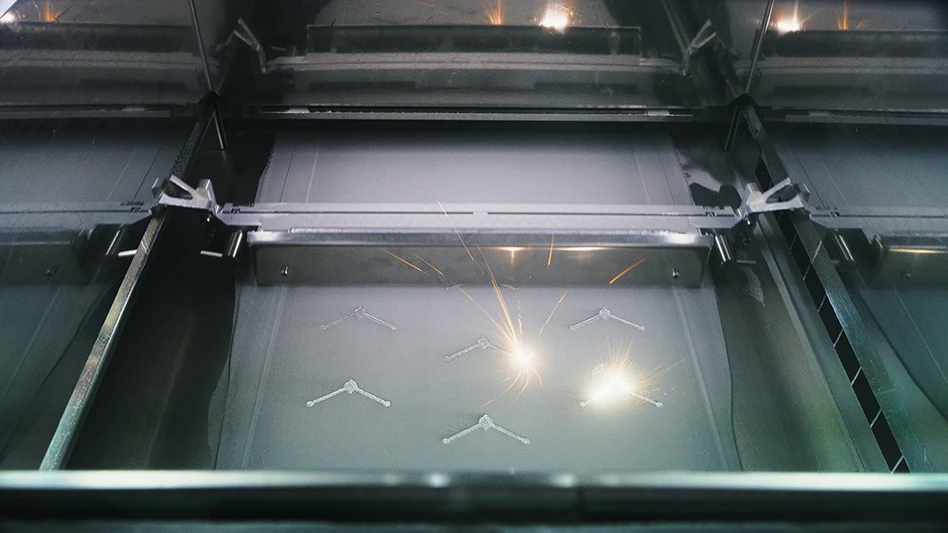
Fluorescence-guided surgery is a relatively new but widely used medical procedure for the removal of cancerous tumors. It’s now estimated that more than 70% of the glioblastoma brain tumors are resected with fluorescence-guided surgery. Using an imaging agent along with highly specialized lighting and optical filters to visualize malignant tissue in real- time, it allows surgeons to identify malignant tumors with an unprecedented level of accuracy. Unfortunately, fluorescence-guided surgery required a very expensive, specially equipped surgical microscope.
This is where Designs for Vision Inc. (DFV) stepped in. A New York-based medical device manufacturer, DFV has designed, tested, produced, and sold custom, head borne optical and electro-optical devices for more than 60 years. It was DFV’s goal to produce a superior visualization device at a tiny fraction of the cost of current technology, making this novel procedure accessible to all healthcare facilities.
Concept to design

The initial concept for this device was developed at a neurological symposium in New York City in 2019. This is where executives from DFV were introduced to Dr. Walter Stummer – considered the father of fluorescence-guided neurosurgery. Dr. Stummer explained the science behind the imaging agent and the limitations in customer acceptance due to the high buy-in cost for the surgical microscope. Since DFV has experience developing products that are substantially equivalent to surgical microscopes, the concept was discussed, finalized, and brought back to DFV’s engineers to begin the design process.
The projected device was required to perform two functions. First, it needed to produce specific wavelengths of high-energy violet (HEV) light and project them onto the surgical field. Second, it needed to refine the returning light through magnified optics fitted with attenuation filters. Since this was designed as a wearable device, it needed to be lightweight, portable, and equipped with hands-free controls. The resulting device was the Reveal FGS, a two-part, wearable device customized to the user’s physiological requirements and developed under the guidance of industry experts and key opinion leaders to ensure it provided results equal to or better than the surgical microscope.
The Reveal FGS
Constructed as a two-part device, the first part of the Reveal FGS employs a foot-pedal activated, head-worn light with three distinct beams collimated to a singular point in space. One beam emits surgical-grade white light and the other two create the HEV spectrum required to induce fluorescence and contrast. Two separate HEV beams were employed in this design to generate the specific wavelengths and intensities of light. Scientific, high-intensity LEDs are used to generate the HEV sources. Integrated dichroic notch filters narrow the emission spectrum. Engineers at DFV constructed an aluminum chassis with locking ball joints to converge the separate beams while keeping the assembly lightweight. More than two dozen CNC machined parts were plated with varying processes to improve thermal characteristics and ensure proper alignment. Production fixtures were designed and built to guarantee repeatability in manufacturing, and a multitude of inspection controls and tools implemented across production lines verified and documented the specifications.
The second part of the device involves eyewear that incorporates optical telescopes with several multi-layer dichroic filters, fixed to the user’s line-of-sight. These dichroic filters were custom-made, as their spectral requirements fell outside the range of standard attenuation filters. This process proved to be a substantial challenge, as the spectral requirements were very rigid. Vacuum deposition coating runs were executed and reiterated more than a dozen times before achieving the final specification. The resulting filters incorporate more than 20 thin-film layers to create the appropriate spectral transmission curves. These efforts produced a device offering a larger field of view and greater light transmission than what was possible through the surgical microscope.

Verification of design
Dozens of prototypes were developed and sent out for verification. Emitted light was tested and re-tested using spectroscopy to verify spectral curves. Neurosurgeons throughout the United States and Europe, including Dr. Stummer, ran side-by-side comparisons to the incumbent technology and confirmed the results, and beta testing reactions were positive.
“Wherever the surgeon looks, just by turning their head, the fluorescent headlight points and reveals the tumor. In a few operations, we have compared the microscope illumination with that of the Reveal FGS and the FGS system is clearly brighter… I was amazed by the level of detail it provided,” says Dr. Theodore H. Schwartz, professor of minimally invasive neurosurgery at Weill Cornell Medicine, New York-Presbyterian Hospital.
At the conclusion of testing the product was certified to medical electrical safety standards and made available for sale. It’s DFV’s hope that the Reveal FGS will help accelerate adoption of this life-saving procedure at qualified medical centers throughout the world.
https://www.designsforvision.com
Explore the June 2022 Issue
Check out more from this issue and find your next story to read.
Latest from Today's Medical Developments
- FANUC America launches new robot tutorial website for all
- Murata Machinery USA’s MT1065EX twin-spindle, CNC turning center
- #40 - Lunch & Learn with Fagor Automation
- Kistler offers service for piezoelectric force sensors and measuring chains
- Creaform’s Pro version of Scan-to-CAD Application Module
- Humanoid robots to become the next US-China battleground
- Air Turbine Technology’s Air Turbine Spindles 601 Series
- Copper nanoparticles could reduce infection risk of implanted medical device





